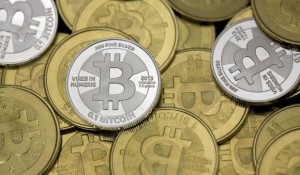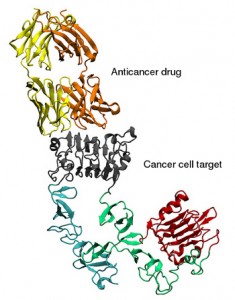Cryptocurrency could’ve remained a theoretical exercise if it weren’t for the mysterious Satoshi Nakamoto, who was outed by Newsweek this week. The man allegedly behind Bitcoin had “a career shrouded in secrecy, having done classified work for major corporations and the U.S. military.” Whatever that means, and whether or not the face that has been linked with the name is the correct one, Bitcoin took a rather peculiar and big cat out of the bag.
Whatever you happen to think of the inventor, or inventors, of Bitcoin, which started a something of a revolution in economics similar to what the internet did to a couple of decades ago to information and publishing, and whatever you think of Bitcoin as an alternative currency, I hope to show that digital currency as a technology is separate and distinct from the economy and process of producing it. Let me state clearly from the outset that I don’t find digital currency as harmful as-such, rather that Bitcoin and the other breed of clones are extremely inefficient and wasteful. They could achieve, I argue, the same goals by being far more useful and valuable to society at large.
We can agree that Bitcoin started something that will be hard to stop, if not impossible. This to me speaks of a demand for what Bitcoin has to offer. While some governments and media outlets tend to put the emphasis on illegal use of digital currencies, technically savvy users see it as efficient way of transferring funds, other users see it as a means to be independent from centralized power and a perfect candidate for a global currency. The efficiency of transferring digital currencies comes from lower transaction fees, but mostly because transferring them are done electronically and not physically. Anonymity, which is only partial, is also a highly sought trait in trade as it gives a sense of security and reduced risk, whether real or perceived.
The Other Side of the Coin
My objection to Bitcoin is not in the technology, nor its use. Put simply, everything has a cost, and the cost of the current crop of cryptocurrencies is rather high to society at large. I’m certainly not the first to notice this inefficiency and some tried to find ways to recoup the cost.
Those of us who have been planning on buying new video cards, a.k.a. GPU, are bitterly aware of the disproportionately high prices of the last generation of AMD cards. Back in December when these Radeon were in obvious shortage Litecoin mining was blamed. AMD improved its supplies of the highly demanded cards, but prices remain high. Eventually miners too had take note too.
There are many other uses to a GPU, besides the obvious mining and gaming, not least scientific and medical research, computer aided simulation, modeling and for finding drugs to cure deadly diseases among other promising and necessary projects. It is this latter group that is harmed by the high prices. And those were only the GPU-intensive projects. At this point CPUs are too slow to cost less in electricity than the potential coin value they mine, but of the projects that could use those CPU cycles are climate simulation and prediction, mind modeling, protein docking, and solar panel optimization to produce clean energy. And I’m leaving out many other HIV, cancer and other drug research projects.
To add insult to injury, not only is the high price of GPUs is reducing the potential number of participants on projects that have a chance of improving human life and prosperity, but they also don’t produce anything that benefits anyone other than the miner.
But that’s not all. Cryptocurrency mining is a double whammy. The energy spent mining is energy wasted. On an individual level one might think there isn’t much difference between playing a game and mining. After all both use the same GPU and will consume the same electricity (per unit time,) which the owner is happy to pay for. However, unlike gaming, or more useful activities as mentioned above, mining has no entertainment value, doesn’t pay game developers that produce the games, doesn’t help us socialize as multiplayer games do, and do not have any hope of teaching us any skills that games might be argued to do. While I may lust over a multi-GPU gaming rig someone spent thousands to ramp up their frame-rate to run folding and similar projects on them when not playing, serious miners run farms of such rigs 24/7 to create money out of whatever their local power-station consumes to supply them with the juice that runs their cutting edge machines.
This isn’t unlike getting paid to produce soot. Or to pay power-stations to produce soot for you. Certainly we can do better and reverse the state of affair on its head: instead of burning away to mine coins, we can solve useful problems to mine coins. After all, digital coins are an arbitrary currency, and as I’ll show below, as long as we can secure it from attackers, what how many coins the work miner do produce and of what value a coin is, are completely up to us.
Before going further, let me state my point as clearly and tersely as I can: Regardless of how our personal ventures are paid for, there are very few investments that can rival the return on investment in scientific and medical research that will benefit the next generation, if not us directly, and we could still have digital currencies.
Economics 101
Traditional economics works by creating “value.” Suppose you have $100 million that you aren’t using at the moment. You can lend it to someone who has an idea for a project. They can do two types of things with it from an economics perspective: one possibility is to spend it all on hiring people to dig the biggest man-made ditch in the middle of nowhere, or, they can pay research centers that work on finding a new technology or a cure for a deadly disease. Of course there are countless other choices, and they don’t come in two colors either, they could use the money to build the next Google or Apple and create innovative products and millions of jobs. The point is that of all possible ventures and shades of black, there are those that go nowhere and do no good to anyone (except perhaps for feeding the workers and their families for the duration of the project, or until they commit suicide) and those that continue to serve most of society long after the project is over.
Any sound economic system should provide an incentive to the individual such that—to paraphrase Adam Smith—through self-interest participants inadvertently do more good to society by seeking to maximize personal gains. In my example above, the lender will be a fool for parting with his or her hard-earned money before first doing due diligence on how the funds will be spent. Yet, if everyone hoards their income and never lend out, society will need to constantly create more and more goods from some source that doesn’t require initial investment to match the growing demand. Clearly an unsustainable proposition. It is therefore in our interest to invest in fruitful projects. But, as I tried to show through my caricature of an example, the investment should pay us, both investors and society at large, more than it spends. Otherwise, eventually the economic cycle will slow down and come to a halt. This is exactly what happens in recession: investors lose confidence that they will get back their investments, so stop lending out.
If we could playback time and be in a position where we had a chance to invest in electronics in the ’50s and ’60s, to ultimately discover the transistor and then integrated circuits which made all of modern electronics, and not least computers, possible, such an investment would clearly have benefited investors and society. Similarly, if Dr. Jonas Salk had asked me for donations to buy equipment or even pay himself and his staff salary for his work on the polio vaccine, no awards will be given to me if instead I had decided to buy ice-cream to school children with the money, albeit arguably a reasonably good cause.
Granted, my examples are flawed: We don’t know in advance that Dr. Salk will succeed in producing vaccination for a disease that still stands without cure to-date and had infected as much as 350,000 children a year in 1988. In reality there would be many others working on similar vaccines and cures than just the one we know was successful post-factum. However, and this is my point, donating to any one of the researchers would be a much better long term investment to the very same children who received my free ice-cream.
Bitcoin Economics
To go back to digital currencies and economics, suppose I offer you 50c for smoking a cigarette. If you’re already a smoker, you might just ignore my joke or bother to take my money. If you’re not a smoker, I’m sure my offer will not convince you to start smoking. However if I were to make the offer indefinite, even a non-smoker might be tempted to do the math and find out that if they smoke 30 a day, they can make almost $5500 annually for the effort of a few minutes a day, and that can go even higher the more they smoke. I’m fairly certain that this offer, whether it comes from cigarette producers who are willing to pay for promotional purposes or otherwise, will have had a resonance as recent as a few decades ago when the harms of smoking were still unknown, if something very similar hasn’t been attempted already, which wouldn’t surprise me personally. In fact we should expect many people in poor conditions, who are either ignorant of the harms of smoking, or think it’s a lost cause to preserve their vanishing health anyway, might be tempted to take the offer.
Bitcoin does something very similar although in a different way. The offer is the following: participants in Bitcoin mining are rewarded for doing some work with a unique string of bits that they can use to trade with someone who’s willing to accept it in return of something of value, including goods, services, and of course cash. The inventor of Bitcoin made it easier to do said work than to counterfeit the “coins” (which are really just long numbers). (This is very important because if I were to offer you some product (or banknote) that people fake easily, you should immediately realize that you will have a hard time getting back what you paid for the original when everyone pays less for the fake.)
Unlike an employer, Bitcoin isn’t offering a work which has a purpose that is beyond our comprehension or need-to-know. The work Bitcoin is offering the reward for is completely arbitrary and, I argue, harmful to everyone, both participants and bystanders. Essentially, Bitcoin, and all cryptocurrencies to date, are offering a reward for finding a certain color and shaped grain of sand in the desert. They have designated sand hills to mine and the total number of said grains to be discovered. The value of the each grain is determined by the market and demand. And apparently there is a significant demand for them in markets that either want to be independent of the current monetary system, or, they like the efficiency of passing the grains around, once they find or buy them that is.

500 volunteers shoveling to move a dune in Lima from its original position.
Once all the special grains have been discovered, the sand hills will be abandoned and all the trucks and shovels and all the work of digging, sieving and moving the sand will be forgotten. (This isn’t strictly accurate, as transaction fees will still make it lucrative for miners to continue validating and keeping a ledger of all transactions even when there are no new coins to discover.) But the energy and productivity lost to other more useful projects will be forever gone. What will linger along with the coins mined will be the long-term effects of burning so much electrical energy and building specialized hardware that, with the exception of general purpose GPUs and CPUs, have little or no use for much else than mining coins.
One response I got from a cryptocurrency aficionado was that it’s no different from mining for gold. It’s true that similarities between the two are abound, and I wholeheartedly agree that mining for gold can be similarly wasteful, but gold is a scarce metal that has numerous applications and uses beyond being used for monetary exchange and jewelry. Geology.com rightly calls it the most useful metal. Gold is used in the CPU and RAM that power your computer and in solar panels that produce electricity from sunlight. They are used in medicine and in industry and to make the reflective layer of early and high-end CDs. This is by no means an exhaustive list, but digital coins have nothing to offer in any of those applications anymore than they could be used in the successor of Hubble, the James Webb space telescope‘s mirror, or as a lubricant in space vehicles. Nor could they be used in surgical equipment.The monetary value of gold may be arbitrary from one point of view, but its value as a metal should never be underestimated.
In fairness, the shortcomings of Bitcoin I criticism are not not unexpected. After all it’s the first digital currency. Nonetheless, we should be aware of them and their real cost as more and more of the general public partake.
Mining: A Crash Course
As the the pool of miners explodes at an exponential rate, the majority is bound to be casual people who are no more interested in understanding how coins are really mined than the majority understands where and how money is created in the physical world. But here we are interested in going further.
Any currency, physical or digital, has some key properties to secure before having any chance of becoming sustainable as a legal tender. In the physical world control of over amounts in circulation, ownership and prevention of counterfeiting are done in centralized fashions. First, the central bank or an equivalent legal entity is given the monopoly right to print and issue banknotes. (There was a time when banknotes were handwritten IOUs that promised a payout to the holder issued by any “bank.” It was with the advent of permanent banknotes and central banks that this transformed into the current standardized single-currency per state form.) Second, transactions perform by an intermediary banks are managed by said banks such that one cannot double-spend or transfer funds from a fictive account and illegally increase their stash. These two institutions, central banks and commercial banks, are centralized. Centralization is an Achilles’ heel to any alternative currency because it can be controlled and shutdown easily, whether by legal means or by Denial of Service attacks. Distributed currencies on the other hand are immune to this, but at the expense of complexity.
The main issue in distributed systems is that because no single entity controls the ownership and total amount in circulation, there is distrust and the risk of hostile take-over by a rough party. To protect against such attacks, Bitcoin has a validation and voting mechanism built in. This is where the latency in validating transactions comes from. Before a transaction is complete, first a certain minimum number of other miners must confirm it. In Bitcoin the minimum number of confirmation is calculated to be six, which puts the difficulty of double-spending (i.e. spending the already transferred funds for a second time,) computationally unfeasible.
But how do you find coins in the first place? This is the interesting part as it is both intertwined with the confirmation process above as well as the mentioned problem of counterfeiting. Because of its distributed nature, the information that your bank holds secret must be available in public. Otherwise, where should it be if not in a central place, which we established isn’t desirable? Therefore, all transactions as well as wallet balances are also public information. What isn’t public is the identity of the wallet owners. But the network of transactions that they had committed and the wallets at each end of every transaction are also known. So one can trace the full history of all available coins and transactions and the balance of every single wallet are all public information. Now to create new coins, a miner has to do two things: First, it find the longest valid chain of transactions that it receives from other miners (remember that there are potential attackers who are sending out invalid transaction chains to essentially steal coins,) thus choosing the hardest chain to fake by an attacker (this is the confirmation stage). Second, they start finding a new block by simply finding a random number, such that: SHA256(last_hash + random) < last_hash
This formula a simplified, but the principle is preserved. The SHA256 is a function that takes a sting of bytes of arbitrary length and returns a fixed-length bytes (a long number really). The last_hash is also the result of an SHA256, and it is the hash generated by the last miner in the chain. Miners repeatedly call SHA256 on the new combination that they generate based on the random number (called nonce) and typically count the leading zeros of the resulting hash. If a certain number of zeros are found, then their work is complete and they send it to other miners in the network, which do exactly as we did when we received the block chain. Because we include the resulting hash and the random nonce that we used in the new block, they are able to repeat the same operation and check the result. The key here is in the difficulty in finding a random value and a resulting hash that when ran through SHA256 matches.
If someone else had beaten us to finding a nonce that fits the requirement, we will have to discard our work thus far on the block, check their block and once confirmed, we add their block to the chain and start the above process of mining on their block. Whoever finds a block by the above process is awarded a certain number of coins (typically 50 coins, which are halved at certain intervals). And because the blocks include all the information necessary to know who is who (by unique numbers that are as hard to forge as finding blocks,) and how much they have, all the information is shared in the pool and available to everyone. Thereby forging and faking becomes near impossible.
It’s worth mentioning that if an attacker controls more than half the mining nodes in the pool, they will be able to send out fake block chains that will allow them to double-spend their coins, because their voting power will basically be more than anyone else’s.
As it’s clear, the process of mining is arbitrary and the difficulty of producing coins is only to give strong guarantees that forging will be simply practically impossible. In fact, SHA256 is computed twice to make it even less likely that someone will find a trick or a way to reduce the amount of work they have to do to find a hash. This is like asking someone to throw a coin until they get, say, 500 heads in a row, but with the difference in that they can’t claim they have without actually having to do it, thanks to the cryptographic security of the SHA256 function.
A Better Digital Currency
Digital currencies certainly have their merits and we shouldn’t dismiss them out of hand. The current crop are the first and the technology is still young. They rely heavily on cryptography, whence they get their name, not least because cryptography is well-developed and understood. We know how to create secure messages that are very easy to create and validate but exceeding hard to break or fake. These are exactly the properties one want to have in any distributed monetary system. It is why banknotes are only minted by governments and they use state of the art printing technology to make counterfeiting expensive if not impossibly hard. But there is no reason why we should move sand hills that do little more than waste a lot of valuable resources all for the arbitrary coins that presumed to be in demand and therefore of value.
There are other problems that are very hard to solve, but checking the answer is easy. These problems are known as NP-Hard and the more hardcore subset which are called NP-Complete. These are the hardest problems that exist, in computational terms. To give just one example of type of problems that could be used as a mining proof of work, optimizing the distance the electrical wires have to run in a computer, or the wires, piping etc in a city belong to a group of optimization problems that can’t be solved in a reasonable time except for the most trivial cases. Finding the shortest paths of wiring in a CPU will probably take longer than the universe exists even if all the computer in the world combined their power to solve it. Given a path, it’s trivial to add up the total length and see if it’s shorter than the shortest know or not. In currency system that is built around optimizing such a problem, those who have shorter paths will fetch more value than those with longer ones. There will be an economy, much like memorabilia collectors, where common items have a certain range of prices and highly-sought items that are known to exist have last-seen-price and then there are speculative items that is said to be worth a certain amount if it exists. When such a rare item (or path in our case) is put for sale, the market will decide its value. Alternatively, the first to improve on the previous record broadcasts their results and once validated by more people than any other solution, their block chain becomes dominant and all other blocks with inferior solutions are discarded. Finding the lowest energy protein folding secondary and tertiary structures is another similar problem.
There are many problems that are attention worthy and some of them are known to be very promising in deed. Digital currency could be the perfect catalyst to motivate people to donate more and more of their time and resources towards these goals while generating real value for them in digital coins. These aren’t new ideas by any means, and some have already made attempts at them. Some were pipe dreams, while others might have started in earnest.


